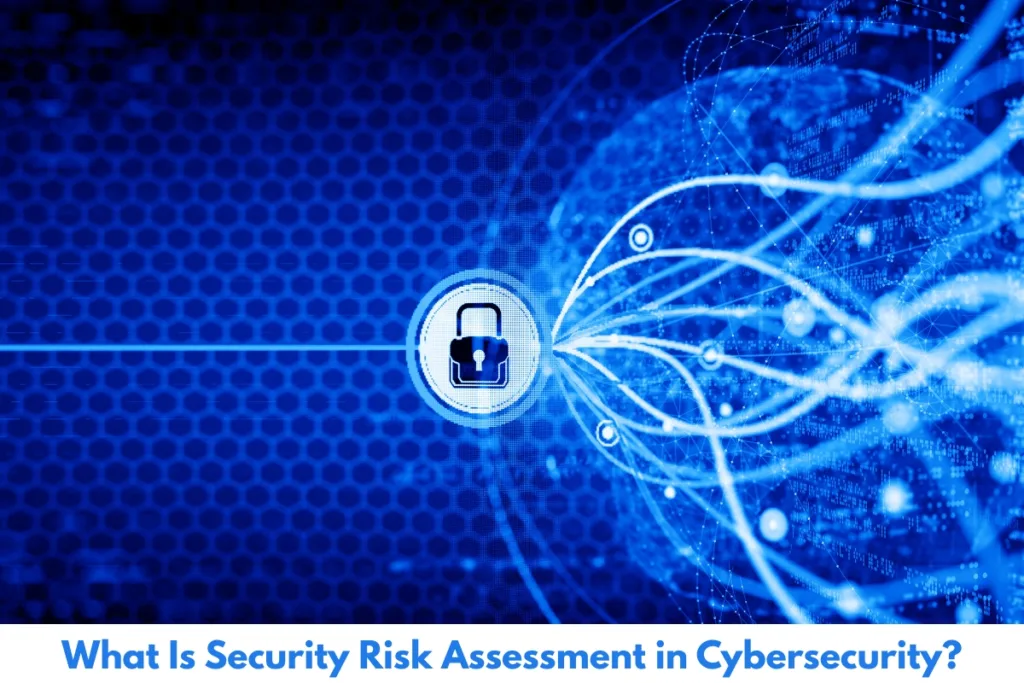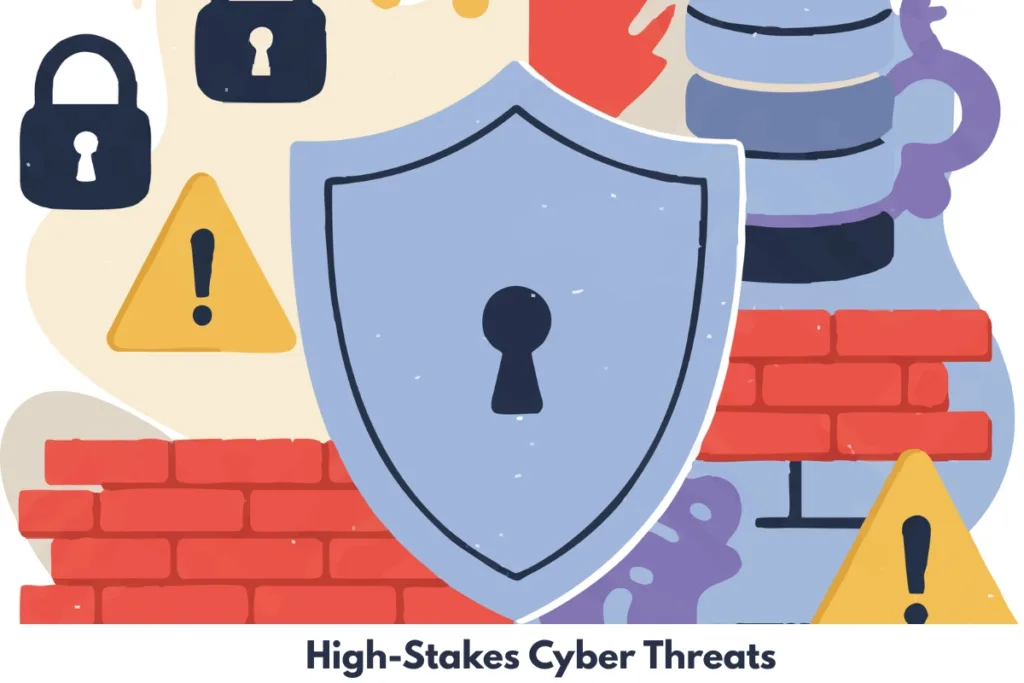That suspicious bank email. Public WiFi at coffee shops. Random apps on family devices. Smart home systems track your routines. Each creates vulnerabilities that could expose sensitive data or even create physical security risks.
Most people think cybersecurity just means strong passwords and antivirus software. But, Protection without assessment is like installing a security system without knowing where your doors are. You might get lucky, but you’re probably leaving critical gaps exposed. For executives and high-net-worth individuals, understanding your cyber risk profile is an essential protection against threats that bridge digital and physical worlds.
Let’s explore why risk assessment forms the foundation of effective cybersecurity.
What Is Security Risk Assessment in Cybersecurity?

A security risk assessment systematically identifies, analyzes, and evaluates potential threats that could compromise your digital assets and sensitive information.
Unlike basic security checks, comprehensive risk assessments examine your entire digital footprint. They determine:
- What threats exist, and who might target you
- How likely are these threats to occur
- What damage would a successful attack cause
- Which vulnerabilities create the greatest exposure
- What security measures provide the most protection
For executives and high-profile individuals, these assessments go beyond standard IT protocols. They evaluate unique risk factors like targeted attacks, surveillance threats, and connections between cyber vulnerabilities and physical security.
Why Is Risk Assessment Critical in Cybersecurity?
Risk assessment forms the foundation of effective cybersecurity for several key reasons:
The Strategic Value of Cybersecurity Risk Assessment
Benefit | Business Impact | Personal Security Impact |
Proactive Protection | Finds vulnerabilities before attackers do | Prevents privacy breaches and targeted attacks |
Resource Optimization | Directs security spending toward actual risks | Ensures protection focuses on genuine threats |
Threat Intelligence | Provides awareness of new attack methods | Identifies when you’re specifically targeted |
Regulatory Compliance | Meets legal data protection requirements | Reduces liability for breaches |
Incident Preparedness | Enables faster response to breaches | Minimizes damage when attacks succeed |
For high-profile individuals, cyber vulnerabilities often enable physical security threats. Compromised home networks reveal when properties are empty. Hacked emails expose travel plans. GPS devices track movements. Tagged social media creates stalking opportunities.
This merging of digital and physical security makes risk assessment essential for protection, similar to our approach in security crisis management. Understanding your specific vulnerabilities is the first step toward meaningful protection.
Cyber Threats Requiring Professional Risk Assessment
The cyber threat landscape for executives differs significantly from general concerns. These threats need specialized assessment:
High-Stakes Cyber Threats

- Targeted phishing attacks – Schemes customized to executives using personal details
- Business email compromise – Attacks impersonating executives to authorize fraud
- Executive device targeting – Malware designed for high-value targets
- Digital surveillance – Monitoring of communications and movements
- Home network exploitation – Attacks against residential systems
- Supply chain compromises – Attacks targeting vendors with access to your systems
- Cyber-physical attacks – Digital breaches enabling physical threats
- Reputation attacks – Data theft leading to extortion or public exposure
These threats target high-value individuals using sophisticated social engineering rather than just technical exploits. The consequences go beyond data loss to include financial theft, privacy violations, physical danger, and reputation damage.
Like our TSCM services, cybersecurity risk assessments identify both technical vulnerabilities and human factors creating exposure to these threats.
Key Components of Cybersecurity Risk Assessment
A comprehensive risk assessment includes several essential components:
Asset Identification and Valuation
The process begins by identifying what needs protection. This includes business systems, personal devices, cloud services, and sensitive data. For executives, this covers both corporate and personal assets that might provide attackers with valuable access.
Threat Assessment and Actor Profiling
This evaluates who might target you and what methods they might use. High-profile individuals face threats from criminals, competitors, activists, or even nation-states, depending on position and industry.
Vulnerability Discovery
This identifies security weaknesses through scanning, testing, and review. It examines system vulnerabilities like outdated software and human factors like security habits.
Risk Analysis and Prioritization
This analyzes which combinations of threats and vulnerabilities create the greatest risk. It creates a roadmap for security improvements focused on critical exposures first. Professional assessments consider both technical factors and your specific profile as an executive, ensuring protection addresses your unique risks rather than generic concerns.
How Cybersecurity Risk Assessment Works
The assessment process follows a structured methodology:
Step 1: Scope Definition and Asset Inventory
This defines what’s being assessed – business systems, personal devices, home networks, cloud services, and sensitive data.
For executives, this includes mapping relationships between business and personal technology. Security professionals interview you about specific concerns, environments, and potential adversaries. This creates an assessment tailored to your situation rather than generic checklists.
Step 2: Vulnerability Discovery and Threat Analysis
Experts use specialized tools to identify vulnerabilities across your digital footprint. This includes technical scanning, security configuration review, access control analysis, and evaluation of existing protections. This phase incorporates threat intelligence specific to your industry and position to identify likely attack vectors, similar to approaches in our corporate security investigations content.
Step 3: Risk Evaluation and Prioritization
Vulnerabilities are analyzed to determine which create the greatest risk based on:
- Likelihood of exploitation
- Potential impact if compromised
- Difficulty of exploitation
- Value of targeted assets
- Existing protective controls
This produces prioritized findings distinguishing between critical risks needing immediate action and lower-priority concerns.
Step 4: Recommendations and Implementation Roadmap
The assessment concludes with a comprehensive report detailing findings and providing actionable recommendations. For executives, these balance protection with practicality, ensuring security measures don’t unnecessarily disrupt operations or lifestyle.
Common Cybersecurity Vulnerabilities Risk Assessments Uncover
Professional assessments consistently identify certain vulnerabilities, especially for high-profile individuals:
Frequently Discovered Security Gaps
- Inadequate authentication – Weak passwords, lack of multi-factor, shared credentials
- Unpatched systems – Outdated software with known security flaws
- Overprivileged accounts – Users with excessive access rights
- Insecure home networks – Poorly configured WiFi, default passwords
- Excessive data exposure – Sensitive information stored without encryption
- Mobile device vulnerabilities – Unsecured personal phones accessing sensitive data
- Third-party access risks – Vendors with unnecessary system access
- Insufficient backup systems – Inadequate recovery capabilities
- Personal information leakage – Excessive public details enabling social engineering
For executives, these vulnerabilities become particularly dangerous. Attackers will invest significant resources targeting you specifically rather than seeking easier victims. What might be minor for average users becomes serious when you’re a high-value target.
Why Executives and UHNW Individuals Need Specialized Cybersecurity Risk Assessment
Standard IT assessments focus primarily on system vulnerabilities. Executives and high-net-worth individuals face unique cybersecurity risks requiring specialized evaluation:
- Attackers are willing to invest heavily in targeting you specifically
- Blended threats bridging digital and physical security
- Lifestyle factors, including travel, multiple properties, and household staff
- Family members whose devices create additional attack vectors
- Higher stakes from privacy breaches and reputation damage
- Intersection between business and personal technology
Much like hiring personal bodyguards requires expertise beyond general security, cybersecurity for high-profile individuals needs assessment methods that address these unique concerns.
Frequently Asked Questions
How often should cybersecurity risk assessments be conducted?
Comprehensive assessments should occur annually at a minimum. Additional reviews should follow significant system changes or emerging threats. High-profile individuals should conduct targeted assessments before major events, travel to high-risk regions, or when facing specific concerns.
What is the difference between vulnerability assessment and risk assessment?
Vulnerability assessments identify technical weaknesses in systems. Risk assessments evaluate both vulnerabilities and threats to determine actual exposure. Risk assessment is more comprehensive, considering likelihood, impact, and context beyond technical gaps.
How much does a cybersecurity risk assessment cost?
Executive-level assessments typically range from $15,000-$50,000, depending on scope and complexity. Basic assessments for small organizations may start around $5,000. Comprehensive evaluations of complex environments can exceed $100,000.
Can risk assessment prevent all cyberattacks?
No security measure guarantees complete protection. Risk assessments significantly reduce exposure by addressing vulnerabilities, but sophisticated attackers may still succeed.
Final Thoughts
Effective cybersecurity begins with understanding exactly what you’re protecting against. For executives, professional risk assessment provides the foundation for strategies addressing your specific threats rather than generic concerns. As digital and physical security converge, a comprehensive assessment becomes critical for those with elevated risk profiles.
At HK Defense Solutions, our risk advisory services include specialized cybersecurity risk assessments. We understand the unique threat landscape facing executives and high-net-worth individuals, providing protection that addresses both digital and physical security concerns.
